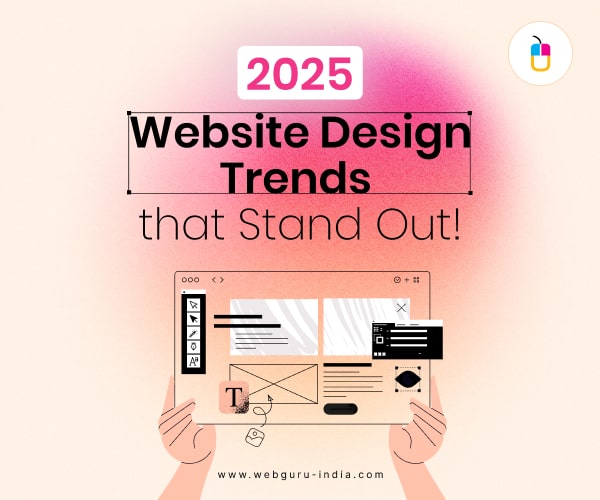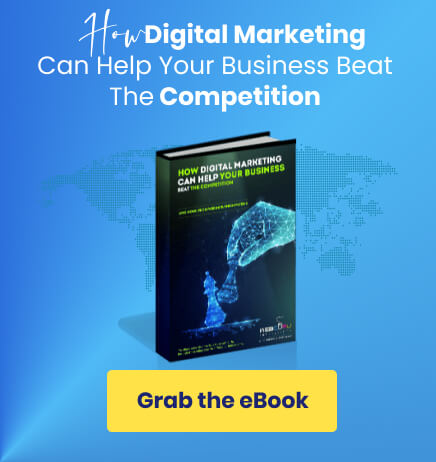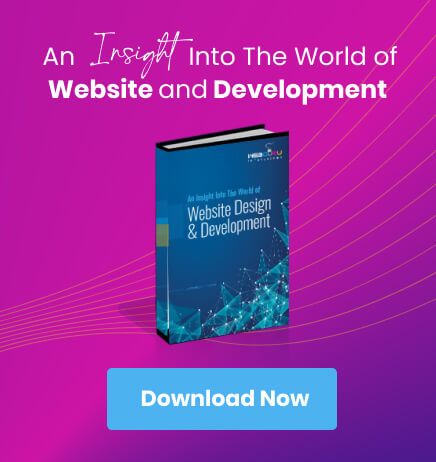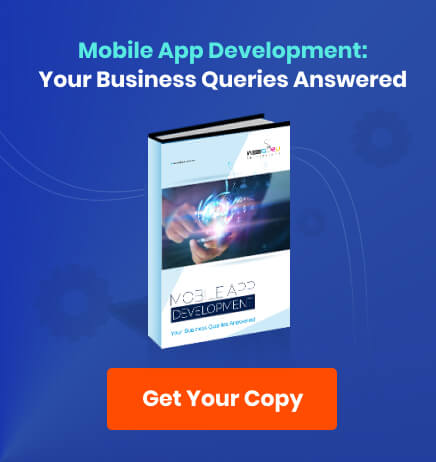Home Blog Website Design Services Web Design Revolution: The Must-Watch Trends of 2025
Web Design Revolution: The Must-Watch Trends of 2025
- 04 Jan / 2025
- 1,641 views
- 9 Min Read

Web design in 2025 is expected to redefine digital landscapes through trends that combine creativity, innovation, and responsibility. From unorthodox layouts and immersive 3D designs to cursor-centric interactivity and voice user interfaces, these trends prioritise user engagement and accessibility. Green web design encourages sustainability, whilst microinteractions, bespoke visuals, and parallax scrolling improve storytelling. Grid designs provide structure, while white space maintains visual clarity. Together, these features create a seamless experience that captivates consumers while also setting new standards for website aesthetics and functionality.
Last year’s trends in website design are now common, and there’s no way for you to stand out. And these trends keep on changing with the changes in the way people interact with each other and perceive online information. This also includes the custom web design services that aim to keep up with the ever-changing digital landscape.
While the focus remains on creativity and customisation, the innovations in the technology keep evolving to meet more needs. This blog presents you with the trends that would take over 2025 for website design and functionality.
Things That Your Website Might Benefit From This Year
• Unusual/Unconventional Layouts
In 2025, web design will drift away from typical web page patterns and towards unique layouts that attract and pique users’ interest. With no set patterns, these designs will often be based on asymmetry, overlapping elements, and imaginative layering. This is suitable for creating a dynamic visual experience for users who visit your site.
Designers this year are likely to utilise this trend to create layouts that direct users through web content in unexpected ways. This will increase engagement while breaking traditional navigation conventions. Remember, 94% of first impressions on brands are related to web page designs. With this, your website can leave a lasting impact by breaking the idea of predictability among online website visitors.
• Cursor-Centric Interactivity
The use of cursors are not limited to pointing and clicking. This year, learn how cursors have become a medium for engagement and storytelling. Cursor-centric interactivity increases user engagement by changing cursor movements into a dynamic element that responds according to the content around it.
The pointer becomes a dynamic partner in the user experience for the time a user is on your website. This is facilitated by features like hover-activated animations, trail effects, and morphing shapes. This approach gives websites a more lively, immersive experience in addition to a playful aspect.
• Parallax Scrolling
If you have hired experts from a website design company, ask them about parallax scrolling. This is a design approach in which background items move slower than foreground elements, and it will continue to dominate the web design landscape. This year, top designers are likely to incorporate multi-layered images for generating an illusive depth and motion.
Parallax scrolling is used to deliver compelling web page content, with smooth navigation that helps garner the attention of users longer. So they stay on your website for a longer time with high chances of conversion. This method improves narrative experiences by converting static web pages into dynamic, visually appealing canvases.
• Grid and Modular Designs
Even though unconventional layouts are becoming more popular, grid and modular designs are still in demand for their dependability and functionality. These designs are perfect for websites with a lot of content since they place an emphasis on balance and structure.
Pages are divided into clearly readable modules so that readers can browse and engage with the content at a faster pace. Additionally, modular designs are versatile, enabling responsive layouts that fluidly change to fit various screen sizes. Because 8 of 10 users usually stop engaging with content that doesn’t show properly on their device. The secret to creating flawless user experiences is this combination of creativity and order.
• Custom Illustrations
For firms to stand out in the highly competitive and crowded digital landscape, unique graphics will be a trending storytelling tool this year. Unlike stock graphics, bespoke illustrations will help reflect your brand’s personality and beliefs. So you get to make your websites more genuine and relatable for the users.
In 2025, illustrations will become more experimental, with brilliant colours, abstract forms, and hand-drawn components taking centre stage. Relying on default designs and images is now history and mainstream. Custom illustrations and imagery can create emotion, connect with people on a deeper level, and contribute to the overall design narrative.
• Voice User Interface (VUI)
If you hire professionals to get custom web design services, ask them if they can enable VUI on your web page. Voice User Interfaces (VUIs) are revolutionising web interactions, with smart gadgets and voice assistants becoming more commonplace. They provide a hands-free yet inclusive experience by enabling voice commands for website navigation, search, and task completion.
As the voice feature makes it easier for people with impairments to use websites, this trend is particularly important in terms of accessibility. VUIs will become more responsive and intuitive with the development of natural language processing technologies more. So we get to establish new benchmarks for online user engagement.
• Micro-Interactions and Micro-Animations
In 2025, minute design elements such as micro-interactions and micro-animations are expected to gain traction as vital tools for increasing user engagement. These subtle, deliberate features provide feedback, guide users, and add a touch of delight to the browsing experience.
Micro-interactions can be in the form of a button that changes colour when hovered over or a loading spinner that transforms into a humorous animation. These help to improve a website’s overall functionality and attractiveness while also reducing perceived wait times. They make sure that each interaction is intuitive and rewarding.
• Immersive 3D Design
Nowadays, three-dimensional design is a key component of online design and is not just found in games and entertainment. And it is a trend that will keep being in the frontlines in 2025 as well. Websites come to life with immersive 3D components that enhance realism, depth, and interaction.
This trend is again helpful for increasing user engagement and offers a tactile experience. From fully interactive 3D worlds to product visualisations that users can spin and explore. Visual narrative will be redefined by the use of 3D design this year as web technologies such as WebGL and HTML5 advance.
• Sustainability and Green Web Design
Sustainability is now a trend in almost every industry and business process. It is also becoming a key component of modern online design, reflecting a larger worldwide shift towards environmentally sensitive behaviours. Green website design focuses on lightweight coding, optimised media assets, energy-intensive animations, and energy-efficient hosting solutions to reduce internet-associated carbon footprints.
Beyond technical optimisation, this trend includes ethical design decisions, such as supporting eco-friendly messages and pushing for sustainable activities. Designers of a reputed website design company would prefer to create websites that reflect their users’ ideals, fostering trust and loyalty in an increasingly conscientious audience.
• White Space and Negative Space
Negative space, or the process in which white space is balanced with content, is becoming a vital design component. This is significant considering how people may become overwhelmed by digital clutter on webpages with essential products or services. White space is not empty, rather, it balances the information, makes it easier to read, and highlights important details.
It gives designs a crisp, contemporary look while enabling users to concentrate on the most crucial details. Designers will experiment more with inventive ways to employ white space in 2025 to create minimalist layouts that are both aesthetically pleasing and useful.
Conclusion
Web design trends in 2025 combine creativity, innovation, and responsibility. From modern layouts and interactive cursors to sustainable practices and immersive 3D designs, the goal is to create an engaging website with a unique outlook.
As technology evolves and customer expectations shift, designers are the ones who can continue to push the trends more while emphasising usability and accessibility. They do this so that you get to create websites that not only captivate but also leave a lasting impression on customers.
And if you are interested in any of these features that are yet to be applied to your webpage, Webguru Infosystems is here to help. Hire our experts and craft a website that can bring you more customers.

Sanjana Das
A writing enthusiast, trying out all possible forms of creativity, who loves to set extreme limits of abilities in painting, reading and savouring entertainment any time.
3 comments
Leave a Reply

-
1000+
Happy
Clients -
25+
Countries
Served -
19+
Years of
Trust








Love your blogs! They’re super informative and a great read. Thanks for sharing!
This is a really cool look at what’s coming in web design!
Your article effectively highlights the evolving web design landscape for 2025, emphasizing creativity, interactivity, and sustainability. It provides a well-structured overview of key trends such as unconventional layouts, cursor-centric interactivity, and immersive 3D elements while maintaining a balance between innovation and usability. The inclusion of accessibility and sustainability considerations further enriches the discussion, making it relevant to a broad audience.